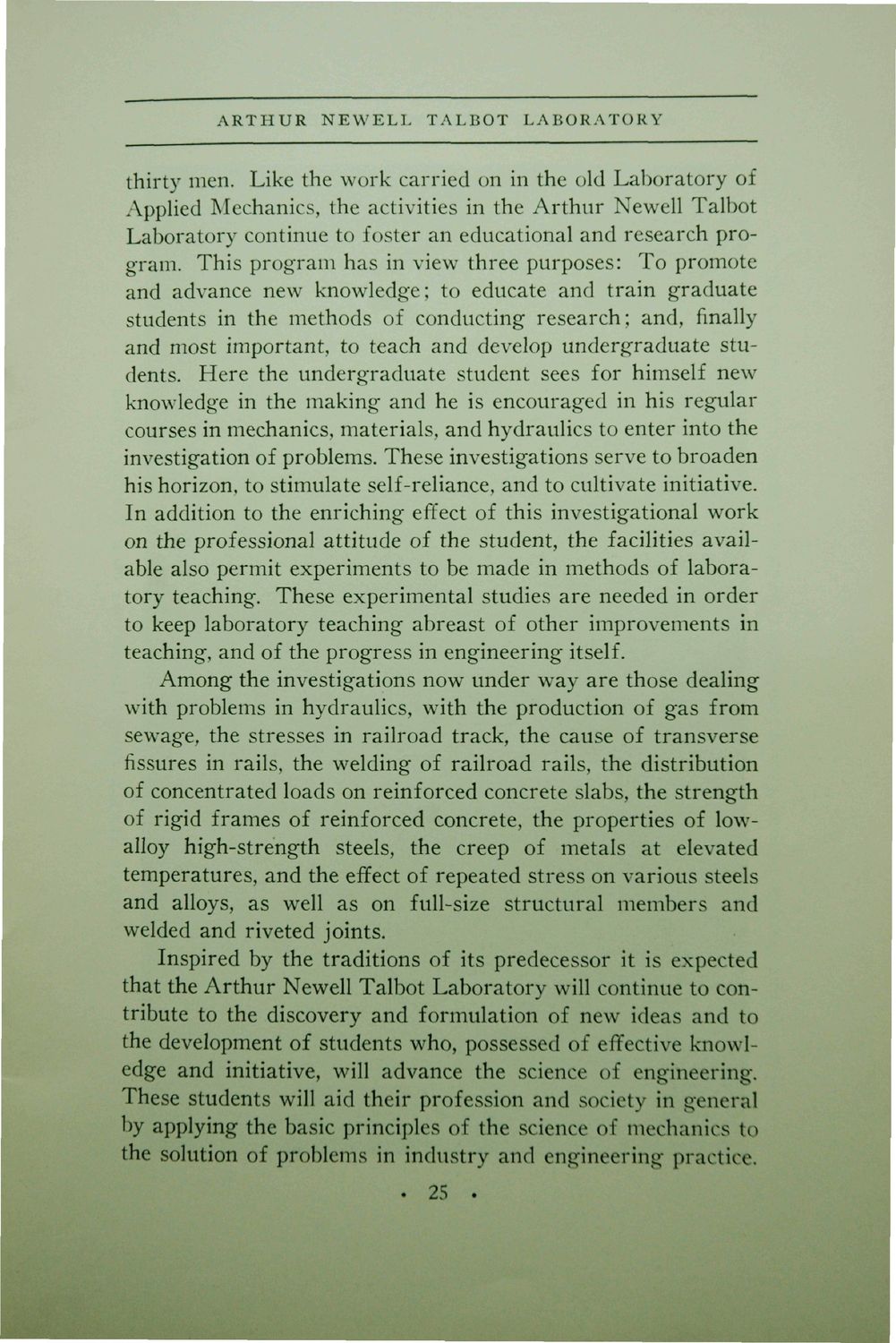| |
| |
Caption: Dedication - Talbot Lab
This is a reduced-resolution page image for fast online browsing.

EXTRACTED TEXT FROM PAGE:
ARTHUR N E W E L L TALBOT LABORATORY thirty men. Like the work carried on in the old Laboratory of Applied Mechanics, the activities in the Arthur Newell Talbot Laboratory continue to foster an educational and research program. This program has in view three purposes: To promote and advance new knowledge; to educate and train graduate students in the methods of conducting research; and, finally and most important, to teach and develop undergraduate students. Here the undergraduate student sees for himself new knowledge in the making and he is encouraged in his regular courses in mechanics, materials, and hydraulics to enter into the investigation of problems. These investigations serve to broaden his horizon, to stimulate self-reliance, and to cultivate initiative. In addition to the enriching effect of this investigational work on the professional attitude of the student, the facilities available also permit experiments to be made in methods of laboratory teaching. These experimental studies are needed in order to keep laboratory teaching abreast of other improvements in teaching, and of the progress in engineering itself. Among the investigations now under way are those dealing with problems in hydraulics, with the production of gas from sewage, the stresses in railroad track, the cause of transverse fissures in rails, the welding of railroad rails, the distribution of concentrated loads on reinforced concrete slabs, the strength of rigid frames of reinforced concrete, the properties of lowalloy high-strength steels, the creep of metals at elevated temperatures, and the effect of repeated stress on various steels and alloys, as well as on full-size structural members and welded and riveted joints. Inspired by the traditions of its predecessor it is expected that the Arthur Newell Talbot Laboratory will continue to contribute to the discovery and formulation of new ideas and to the development of students who, possessed of effective knowledge and initiative, will advance the science of engineering. These students will aid their profession and society in general by applying the basic principles of the science of mechanics to the solution of problems in industry and engineering practice. . 25 •
| |